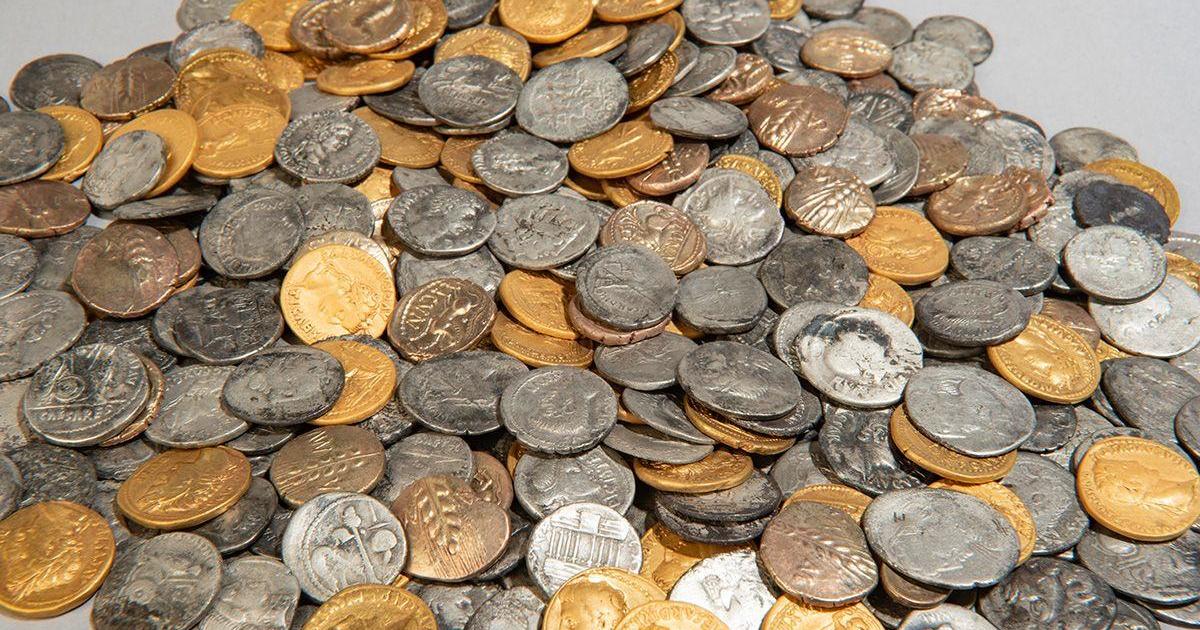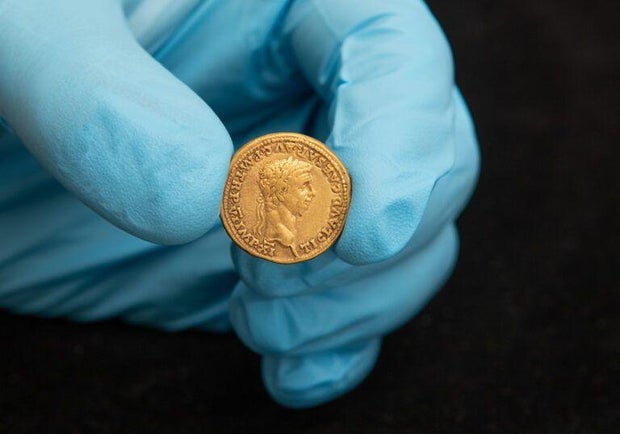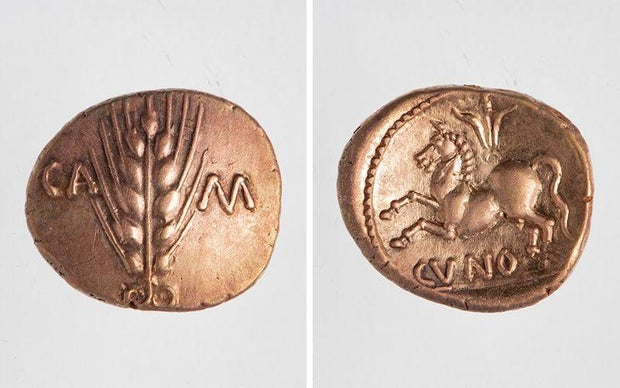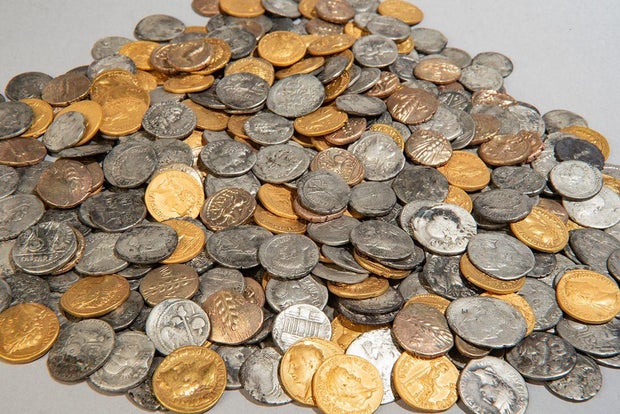
Hundreds of gold and silver coins buried in the Netherlands 2,000 years ago
Hundreds of Roman Age gold and silver coins were found outside the village of Netherlands, said officials this week.
Coins have been thousands of years, the Dutch Cultural Heritage Agency said in the news releaseand a mixture of Roman and British coins. Bunnik, the village where they were buried, was once on the north border of the Roman Empire. This is the first time such a finding was made on the European continent, the agency reported, the only other comparable discovery in the United Kingdom.
Two metal detectors were found, then officially reported coins to the authorities. Then the archaeologist examined the revelations to establish their reality, and more excavations were made.
Most artifacts were Roman coins, which were dated 46 to 47, at the end of the first Roman achievements in Britain, and were mainly stamped with the portrait of Emperor Claudius. Almost 300 of Roman coins is silver reflex BC Some of these coins between 200 meters and 47 are stamped with unique portraits, including a few of Julius Caesar, one of the King of the North African region, the King of the North African region. According to the news release From the National Museum of the Netherlands.
Rijksmuseum van antiquities
72 gold were found among Roman coins Golden BC From 18 to 47, these coins do not show signs of the coins of the cultural heritage agency, a pile of fresh coins.
Dozens of other coins made of gold, silver and copper come from now the United Kingdom and stamped with Celtik Kamuniblinus, who also dominated the coins of 9-40-year-old coins. :
Rijksmuseum van antiquities
Roman soldiers return to the house, probably the coins are transferred from Britain to Bunnik, the agency reports. British coins can be war spars, while Roman coins were probably moving to currency. They may be buried to temporarily hide, or as proposals to God, as “an expression of gratitude to the gods, then for a safe return.”
The cultural heritage agency mentioned that the founder shows the lower German importance would you know?or a number of castles along the border between the German states of the Roman Empire. Is would you know? According to, there were 83 to 260 ads UNESCO World Heritage ConventionAnd he separated the empire from the German tribes. Coins show that Roman troops to return from Britain used these points as a route to return home.
Rijksmuseum van antiquities
Of the 404 coins, three hundred and eightyo was bought by the ANC National Museum. Coins can now be considered part of the permanent exhibition of the Archaeological National Collection, the agency reports.



